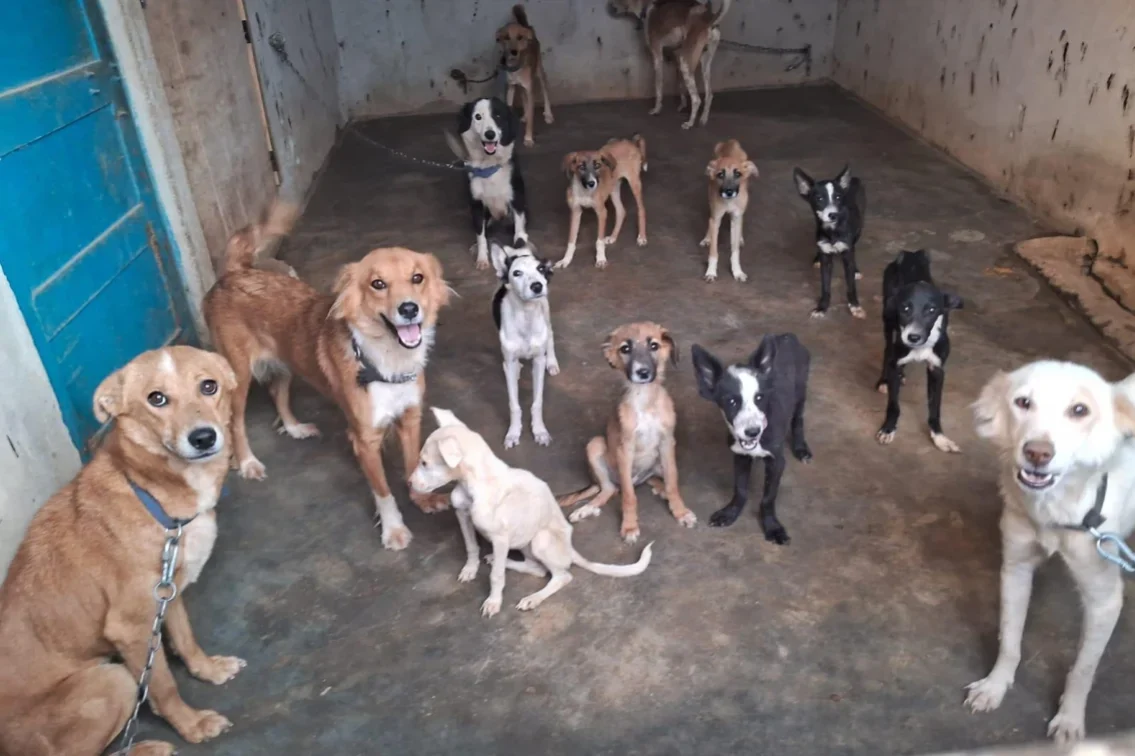Learn how to handle an amoeba infection in your dog. But first, learn what exactly it is.
Amoeba infections are little-discussed but dangerous infections that can cause a host of problems for your dog. The absolute worst part of it is that you can give the infection to your beloved dog. Imagine living with that knowledge! VOSD has you covered so you understand how to act preventively and never have to deal with such an issue.
What is an amoeba infection in dogs?
Amoeba infections or, amoebiasis, is a parasitic infection that can occur in dogs, cats, and human beings. Namely, amoeba enters the body and this isn’t a great sign once it starts to reproduce. There are two kinds of amoebic infections: entamoeba histolytica and acanthamoeba. Humans manage to get it by having contaminated water. It is similar to dysentery in that manner. It usually occurs in tropical and humid areas of the world, often concurrently with places that have bad sanitation. Amoeba infections can therefore occur in rural hamlets across India, especially places that do not have access to clean water. Sadly, humans get infected and then infect other mammals.
What is entamoeba histolytica?
Entamoeba histolytica may remain asymptomatic and show no obvious signs of infection; but it may also cause severe infection and lead to bloody diarrhoea. The intestines become inflamed, as the large intestine plays host to the parasite initially. In some cases, this may even spread through the bloodstream and cause organ failure (liver and kidneys) and will be fatal.
What is acanthamoeba?
Acanthamoeba, on the other hand can lead to inflammation of the brain leading to seizures, nose and ear discharges, fever, and extreme difficulty in breathing. It also causes inflammation of the lungs.
While it varies in its intensity depending on how quickly it is diagnosed and cured, it can be quite debilitating and will definitely need a quick visit to your dog’s veterinarian.
What are the causes of amoeba infections or amoebiasis?
The usual culprit is the human being. In the case of amoebiasis, the host is human and the unsuspecting guest is your pet. Dogs can get infected simply by contaminated water, sewage, or even soil. It can be that easy to pick up the infection. The source is usually infected human feces. The amoeba starts spreading on the skin or the cornea of the eye and causes infection. It could be the infection of the nose that enters into the brain. Whatever the area of infection, paying attention will remain key to quick diagnosis. Young dogs in particular can be highly susceptible to amoebiasis, so make sure you can identify it early! Young dogs normally get it because they don’t have the built-in immunity that comes with age.
Meet Shahrukh! A Cocker Spaniel who was about to be euthanised by a breeder because he was born blind and had tick fever. Now Badshah of VOSD-wood. You can also create a story with Happy Ending – Support VOSD – Dog Rescue Centre! – click to know more
Symptoms of amoeba infections in dogs (amoebiasis)
There are certain symptoms to watch out for, in both types of amoeba infections – acanthamoeba and entamoeba histolytica. However, in many cases, amoebiasis is asymptomatic.
- Dramatic weight loss – This is a common symptom of amoebiasis. The dog is no longer getting the nutrients it needs to be healthy and gain weight.
- Diarrhoea – Bloody stools often accompany runny stools as well. Try and observe discrepancies in your dog’s feces to spot this symptom. It is likely you will notice it naturally when your dog is relieving itself during its daily walk.
- Lack of appetite – A scary sign of acanthamoeba, this could lead to brain seizures. Accompanying this will also be fever and discharge from the nose.
- Halitosis (bad breath), weakness, and vomiting – These symptoms can occur in the case of entamoeba histolytica
Diagnosing amebiasis/amoeba infections
The first thing to do is to take your dog to the vet and get a diagnosis.
A complete blood and urine test will be the usual approach. Your vet may recommend biopsies of the colon as well. Finding out if there is damage to the intestinal lining and trophozoites would be paramount.
The vet may also examine the feces to study the stage of the life cycle of the infecting organism to get a better understanding of the required treatment. It is likely that the vet will want to do a spinal fluid tap to rule out infection of the brain. This will become imperative if there are signs of abnormalities in the protein levels or white blood cell count.
An MRI of the brain and brain biopsies may be ordered in order to study the severity of the infection as well as to see how far the infection has spread. The symptoms exhibited by the dog would greatly be a guide to the kind of tests that will be required.
Treatment of amoebiasis
Entamoeba histolytica is usually treated with an antibiotic for a period of five days. This antibiotic could be metronidazole, which helps to control diarrhea. Steroids might also be prescribed to bring down inflammation.
Acanthamoeba treatment is rare, and once the dog is infected, the symptoms and the infection are usually found after the dog has passed.
What you can do to keep your pet dog safe from amebiasis?
Due to the lethal nature of amebiasis, it is always better to act preventively. The most important thing you can do for you and your dog’s continued well being? Keep your surroundings clean. Make sure to have clean and uncontaminated water at home. You can also spend time observing your dog’s behaviour to spot symptoms.
Frequently visit the vet, as medical check ups are usually the best way to identify amoeba infections.
When you take your dog for a walk, don’t ever allow it to drink water from an exposed pipe, a puddle, or any source that you suspect is not 100% clean. Train your dog from a young age to obey simple commands such as “come here”, “don’t touch”, or “stay” so that your dog doesn’t do things like this before you have a chance to run and forcefully stop the action.
Frequently Asked Questions(FAQ)
1. How do you treat amoebiasis in dogs?
Amoebiasis infection in dogs can be treated through antibiotics over a period of five days or in some cases, steroids to reduce the inflammation of the intestinal tracts. However, prevention is always better than treatment so make sure that all water around your dog is clean.
2. What are the signs of amoeba infection in dogs?
Amoebiasis dog symptoms include dramatic weight loss, diarrhea accompanied with a bloody stool, loss of appetite, weakness, vomiting and bad breath. Individually, these symptoms might not look lethal but together they can be deadly. After entering the body, the amoeba consumes all the nutrients and thus, the dog does not get any.
3. How long does the amoeba take to heal?
Upon medical treatment, amoeba infection in dogs takes up to two weeks to heal. The antibiotic dosage is for a period of five days. However, even after the treatment, you need to make sure that your dog does not intake any unclean water or it may re-aggravate the issue.
4. What is the best treatment for amoebiasis in dogs?
The best treatment for amoebiasis in dogs is an antibiotic one. The drug metronidazole is used to control diarrhea as well as reduce the inflammation of the intestinal walls. Check with your doctor for the dosage as per the weight and medical history of the dog. Do not self-medicate without the proper information. Apart from this, prevention is always the best cure.
The information contained in VOSD Vet Advice™ is not intended nor implied to be a substitute for professional medical action which is provided by your vet. You assume full responsibility for how you choose to use this information. For any emergency situation related to a dog’s health, please visit the nearest veterinary clinic.





